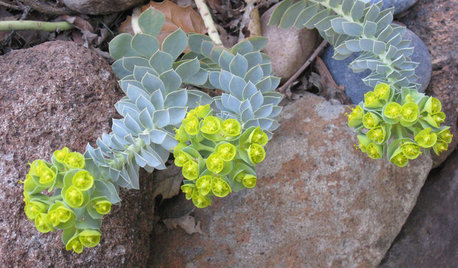Diane Sawyer Overwaters Too!
sister_k
15 years ago
Related Stories

SIDE YARD IDEASNarrow Trees for Tight Garden Spaces
Boost interest in a side yard or another space-challenged area with the fragrance and color of these columnar trees
Full Story
BLUE AND GRAY FOLIAGEGreat Design Plant: Donkey Spurge
Yes, there's the awful name, plus the sap issue. But this plant's foliage and flowers bring something special to Eastern U.S. gardens
Full Story
SAVING WATERXeriscape Gardens: How to Get a Beautiful Landscape With Less Water
Conserve water and make gardening much easier with the xeriscape approach’s 7 principles
Full StoryMore Discussions







laura_42
Skybird - z5, Denver, Colorado
Related Professionals
Camas Landscape Architects & Landscape Designers · Wixom Landscape Architects & Landscape Designers · Bergenfield Landscape Contractors · Berkeley Heights Landscape Contractors · Boca Raton Landscape Contractors · Edinburg Landscape Contractors · Framingham Landscape Contractors · Goodlettsville Landscape Contractors · Palm Beach Gardens Landscape Contractors · Pine Hills Landscape Contractors · Wilton Landscape Contractors · Tyngsboro Landscape Contractors · Palo Alto Solar Energy Systems · Richmond Solar Energy Systems · Saratoga Solar Energy Systemsdafygardennut
sister_kOriginal Author